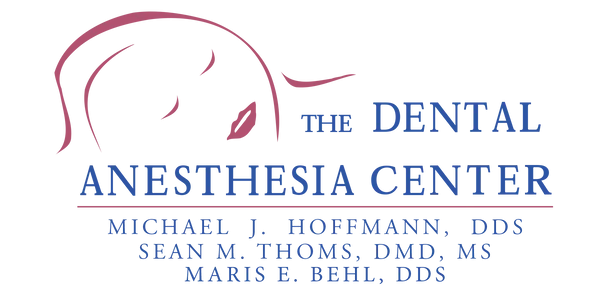Sleep dentistry provides a safe and effective way for special needs patients to receive the dental treatment they need.
A special needs patient may require a special needs dentist. Patients who have paralysis, stroke, Down Syndrome, Alzheimer’s Disease, Parkinson’s Disease, and genetic disorders may need a little extra dental care to ensure they maintain optimal dental health. Everyone requires individual attention and dental care.

We at The Dental Anesthesia Center are here to help you and your loved one. We work hard to make our patients feel at ease by providing exceptional patient care in a relaxed, convenient atmosphere.
Understanding the Different Levels of Sedation
There are different levels of sedation for each patient. The sedation method for an individual is determined by the patient’s medical history and current physical and mental health:
- Nitrous oxide – If your dentist has recommended nitrous oxide or “laughing gas” for a patient, it is probably a good idea. Laughing gas is an odorless gas used to take away the anxiety children can sometimes experience when they are in the dentist’s chair. There are very few side effects and a low risk of using nitrous oxide. The pros of having a good experience are a significant advantage and can affect a patient’s oral habits in the future. When taking nitrous oxide, they never lose consciousness; they are awake and alert the whole time.
- Oral sedation – If you are considering oral sedation, then there might be slightly more risk involved – but it is still minimal. Oral sedation is achieved by giving patients medication before they visit the office. The medication is meant to relax them, take away any anxiety, and make them calmer when the procedure is happening. Oral sedation typically will aid them in falling asleep so they can sleep through the procedure. That means they won’t have any negative memories and won’t be moving around, making it harder for the dentist to finish the procedure.
- IV Sedation – IV sedation involves administering a sedative through a vein, which allows the medication to work very quickly. Since it is administered this way, a dentist can adjust the level of sedation as needed for the dental procedure. Being able to tailor the amount of sedative reduces the risk of complications and side effects. Patients are not asleep during IV sedation; they are semi-awake and may be able to communicate a little with the dentist. Typically, a patient will have little or no memory of the procedure and be able to relax during any treatment.
Sleep dentistry provides a safe and effective way for special needs patients to receive the dental treatment they need. Patients will have a complete exam, an entire mouth series of x-rays (pictures of teeth), and a thorough cleaning while under general anesthesia.
The Dental Anesthesia Center
When you come in for your appointment, Dr. Hoffmann, Dr.Thoms, or Dr. Behl will decide which level is best for you or your loved one.
Your initial oral examination includes a visual examination, charting, diagnosis, and treatment recommendations. We will also take x-rays, including the panoramic x-ray, for proper diagnosis of the anterior (front) and posterior (back) teeth and the bite-wing x-ray series for accurate diagnosis of proximal decay of posterior teeth.
Call Us Today
The first two board-certified Dentist Anesthesiologists in the state of Missouri.

